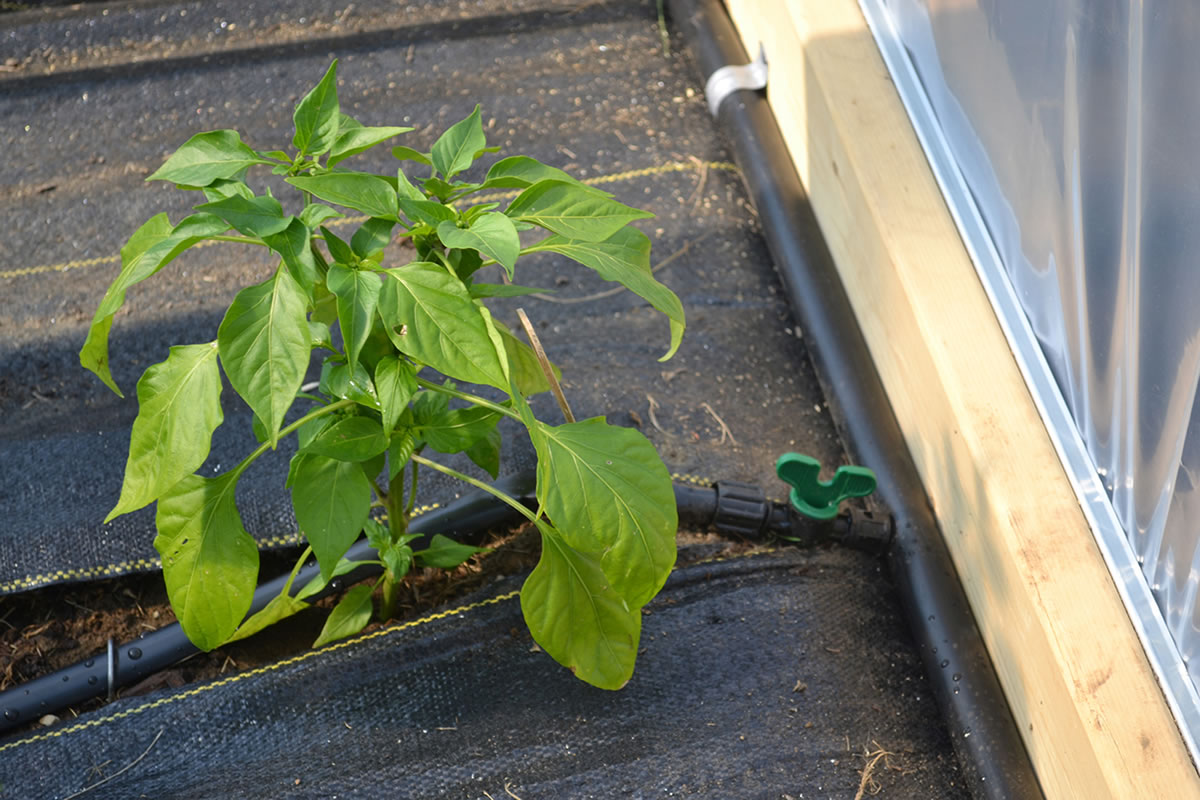Cleaning up the farm before winter is often a scramble, but this year it was a sprint. Imminent ice, snow and an early cold snap threatened to bury any detritus the wind had blown astray — or at least freeze it to the earth.
As I wandered our fields, grabbing tattered scraps of greenhouse plastic and spun-bonded row cover, I noticed a piece of heavy black landscape fabric. It was in pretty good shape for having sailed across a pasture and wrapped itself around a tree.
We usually avoid landscape fabric, which, unlike an organic mulch such as seaweed or straw, contributes nothing to the life of the soil. But as a weed barrier it is more effective than these. This year it helped smother some intractable dandelions and blackberries in the asparagus bed. We only used it in the wide paths between the rows, so the spears could come up unobstructed, but even so it cut our work in half.
In our small vineyard, we let it cover all the area between the trunks of the vines in order to kill grass that had come in, then did the same thing for a row of apple trees next to the vegetable garden.
Asparagus, grapevines, apples: All these are perennial crops. Fabric is much less useful with annual ones that are there a shorter time and are often replaced by succession cropping. The product’s chief benefit is that it lets in air and moisture (and keeps that moisture in) while blocking light that would promote weed growth.
Made from the same polypropylene that’s used for rope, it is super-strong; you can walk on it and it won’t tear. We use the five-ounce woven type, sold by a number of companies such as A.M. Leonard and Johnny’s Selected Seeds, rather than the lighter stuff you find in box stores.
It’s like a thin rug. The slightly shiny side is meant to face up, the duller fuzzy side to face down, because that adheres well to the soil. But we go fuzzy-side-up because it is less reflective and better-looking that way, and still stays put if well-anchored. That means covering it securely along all the corners and edges, either by burying them or by laying down lengths of rebar. There are also soil staples, like giant hairpins, sold for pinning the fabric to the ground but, if left behind, these can get caught in a rototiller’s tines.
A few more tips: Make sure the soil has plenty of organic matter in it before you cover it, to give the soil organisms plenty to work with. Once it’s laid, try to keep the fabric’s surface free of soil, in which small weeds can sprout. In late fall, take up the whole blanket, apply compost or manure to the area, and then leave the soil exposed over the winter to the natural tillage wrought by frost.
Since the fabric is quite durable, you could fold it up, store it, and lay it down again the following year. But in my mind it’s something to use in a weed or grass emergency — the quick fix that saves the day. With that accomplished, you can return next year to a graceful mulch of your neighbor’s spoiled hay — or your own strong arm and a hoe.



